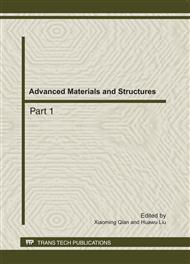p.105
p.111
p.116
p.120
p.124
p.128
p.132
p.137
p.142
Effect of Emulsified Asphalt on Temperature Susceptibility of Cement Asphalt Mortar
Abstract:
Cement asphalt mortar (CA mortar, or CAM) is a composite material with equal presence of cement and asphalt emulsion and acts as a cushion layer in the structure of slab track. In the hardened matrix, asphalt accounts for about 30 vol. %, rendering the properties of CA mortar susceptible to temperature variation. In the paper, different kinds of emulsified asphalts (A70 emulsified asphalt, A90 emulsified asphalt, SBS modified emulsified asphalt and SBR modified emulsified asphalt) for CA mortar and the compressive strengths of CA mortar under different temperatures (-18°C, 10°C, 25°C, 40°C and 60°C) were studied to reflect its thermal dependence. Results indicate that temperature susceptibility of CA mortar prepared with modified emulsified asphalt is better than which prepared with unmodified emulsified asphalt. SBS modified emulsified asphalt -CAM (viz. CA mortar prepared by SBS modified emulsified asphalt) is alleviated at the whole temperature range, while that of SBR modified emulsified asphalt -CAM is improved primarily at the lower temperature region. As for types of unmodified asphalts, A90 emulsified asphalt -CAM outperforms A70 emulsified asphalt -CAM at lower temperature range.
Info:
Periodical:
Pages:
124-127
Citation:
Online since:
September 2011
Authors:
Keywords:
Price:
Сopyright:
© 2011 Trans Tech Publications Ltd. All Rights Reserved
Share:
Citation:


